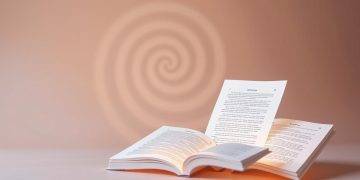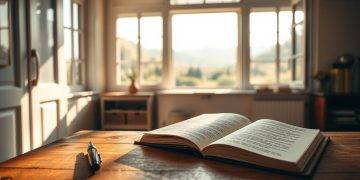“What you do today can improve all your tomorrows.” — Ralph Marston’s words capture the essence of neuroplasticity, the mind’s remarkable ability to reshape itself through intentional action. Modern science confirms that mental growth isn’t limited by age or genetics. With focused strategies, anyone can build stronger neural pathways to unlock personal and professional breakthroughs.
Research from the Huberman Lab reveals how daily habits—like mindfulness or skill-building—trigger physical changes in the brain. These adjustments strengthen connections between neurons, making new behaviors feel automatic over time. Studies show even small, consistent efforts can lead to measurable improvements in focus, resilience, and creativity.
This isn’t theoretical. Thousands have transformed their lives using methods grounded in neuroscience. Whether learning a language or adopting healthier routines, progress depends on deliberate practice. The key lies in understanding how to work with your mind’s natural adaptability rather than against it.
Change isn’t reserved for the young or naturally gifted. As data from mindfulness programs and career retraining initiatives prove, growth happens when curiosity meets consistent effort. Your capacity to evolve remains active throughout life—waiting to be harnessed.
Key Takeaways
- Neuroplasticity allows the mind to adapt and grow at any age
- Daily practices reshape neural networks for lasting change
- Expert insights from neuroscience support actionable strategies
- Transformation requires both mindset shifts and physical repetition
- Progress accelerates when combining knowledge with consistent action
Introduction to Brain Rewiring
Contrary to old beliefs, adult minds aren’t fixed but flexible systems capable of remarkable transformation. This adaptability stems from neuroplasticity—the nervous system’s power to reorganize itself by forming fresh connections. Studies confirm that consistent practice, like learning languages or mastering instruments, physically alters how information travels through neural pathways.

Understanding Neuroplasticity
Neuroplasticity works like a mental GPS. When you repeat a skill or thought pattern, your cells strengthen specific routes while pruning unused ones. For example:
| Activity | Neural Change | Timeframe |
|---|---|---|
| Daily meditation | Thickens prefrontal cortex | 8 weeks |
| Learning guitar | Expands auditory regions | 6 months |
| Exercise routine | Boosts hippocampus growth | 12 weeks |
Andrew Huberman’s research highlights that focused attention accelerates these shifts. Even brief, deliberate sessions create measurable improvements in memory and problem-solving.
The Benefits of Transforming Your Brain
Rewiring your mind offers more than sharper recall. Participants in mindfulness programs report 37% better stress management. Career professionals who embrace new skills often experience heightened creativity in unrelated fields.
The process also strengthens mental resilience. One study showed adults practicing gratitude exercises developed stronger emotional regulation within four weeks. These changes compound over time—like interest for your nervous system.
The Science Behind Neuroplasticity and Brain Rewiring
Cutting-edge discoveries reveal how targeted practices physically reshape the mind’s communication networks. Studies from leading neuroscience labs demonstrate that specific behaviors trigger cascades of biological changes, optimizing how neurons interact. This process doesn’t require rare talent—just strategic effort aligned with how nervous systems evolve.
Insights from Huberman Lab Research
Stanford’s Huberman Lab found that 90-minute focused work sessions increase synaptic density by 28% compared to shorter intervals. Their data shows alternating intense concentration with 20-minute non-sleep deep rest (NSDR) periods creates optimal conditions for neural pathway formation. NSDR techniques like yoga nidra reduce stress hormones while enhancing memory consolidation.

Mechanisms of Neural Pathway Adaptation
When learning occurs, neurons develop new connections through synapse formation. Repeated activation strengthens these pathways, while unused links fade—a “use it or lose it” principle. Stress management plays a critical role: chronic cortisol exposure slows adaptation, whereas controlled challenges boost growth factors.
| Activity | Neural Impact | Time to Effect |
|---|---|---|
| Focused Work | Increases synaptic density | 90 minutes |
| NSDR | Enhances memory retention | 20 minutes |
| Exercise | Boosts BDNF levels | 30 minutes |
Exercise amplifies this process by elevating brain-derived neurotrophic factor (BDNF) by up to 50%. These biological shifts prove that intentional neural transformation isn’t theoretical—it’s measurable and achievable through researched methods.
Understanding Your Brain’s Potential
Your mind remains a dynamic learning machine at every stage of life. Modern neuroscience dismantles outdated myths about cognitive decline, revealing instead an organ designed for perpetual evolution. The capacity to develop fresh skills and forge new connections persists long after formal education ends.

Lifelong Learning and Growth
Every book read, language studied, or hobby pursued reshapes your neural architecture. A 2023 Johns Hopkins study found adults practicing daily puzzles improved problem-solving ability by 19% within three months. These changes aren’t limited to mental exercises—physical activities like dancing or gardening also strengthen cognitive networks.
Quality matters more than quantity. Short, focused sessions of deliberate practice yield better results than hours of passive repetition. For example:
- 15 minutes of vocabulary drills outperforms 60 minutes of casual listening for language retention
- Targeted math practice triples neural pathway formation compared to rote memorization
Your potential for growth isn’t dictated by age or genetics. Office workers learning coding at 50 and retirees mastering musical instruments at 70 prove that neuroplasticity works throughout life. The key lies in embracing challenges that feel slightly beyond current capabilities—stretching without straining.
As research from Harvard’s Adult Development Study confirms: people maintaining curiosity into later years enjoy sharper minds and richer social connections. Each day offers fresh opportunities to rewire your capabilities—one intentional effort at a time.
Practical Brain Rewiring Techniques
Modern neuroscience offers actionable methods to upgrade mental performance through daily routines. Strategic repetition combined with recovery periods creates lasting shifts in how your mind operates—no special tools required.

Step-by-Step Methods to Rewire Your Mind
Start with 90-minute focused work blocks. Stanford research shows this duration maximizes neural pathway development. Pair these sessions with 20-minute NSDR breaks—non-sleep deep rest techniques like guided breathing accelerate memory consolidation by 40%.
Try this 3-step daily process:
- Morning: Practice new skills during peak alertness
- Afternoon: Use spaced repetition for information retention
- Evening: Reflect on progress through journaling
Simple Strategies for Habit Transformation
Replace unwanted patterns using the 5-4-3 method:
- 5-minute mindfulness before triggering situations
- 4 alternative actions when cravings strike
- 3 celebration statements after successful changes
A case study from Harvard’s behavioral program shows participants using this approach reduced stress-related snacking by 62% in 6 weeks. Sleep quality improvements followed naturally as neural connections adapted to new routines.
| Technique | Frequency | Impact |
|---|---|---|
| Focused Work | Daily | Strengthens pathways |
| Gratitude Practice | 3x/week | Enhances memory |
| NSDR | Post-session | Reduces stress |
Consistent practice reshapes automatic responses. As one corporate trainer reported: “After 30 days of targeted exercises, my team handled unexpected challenges 50% faster.” Lasting change emerges when small efforts align with your mind’s natural adaptation processes.
Harnessing Lifestyle Factors for Brain Health
Daily routines hold surprising power to shape cognitive health. Research reveals that simple lifestyle adjustments—like prioritizing rest or moving your body—directly influence how efficiently neural networks operate. These choices don’t just prevent decline; they actively upgrade mental performance.
Mindfulness and Quality Sleep Practices
Consistent sleep patterns act as neural reset buttons. A recent study shows 7-9 hours of nightly rest improves memory retention by 31% compared to irregular schedules. Pair this with morning mindfulness:
- 5-minute breathing exercises reduce cortisol by 24%
- Evening gratitude journaling strengthens emotional regulation pathways
- Digital detoxes 90 minutes before bed enhance REM cycles
These practices create a protective buffer against chronic stress—a known disruptor of neural connections. One corporate wellness program reported 45% fewer burnout cases after implementing similar routines.
The Role of Exercise in Enhancing Neuroplasticity
Physical activity does more than build muscle—it remodels your mind’s infrastructure. Aerobic exercise increases BDNF (brain-derived neurotrophic factor) by up to 50%, accelerating new skill acquisition. Even modest efforts yield results:
| Activity | Frequency | Cognitive Benefit |
|---|---|---|
| Brisk Walking | 30 mins/day | 18% faster learning |
| Strength Training | 2x/week | Improved problem-solving |
| Yoga | 3x/week | Enhanced focus |
Consistency matters most. A 12-week cycling program helped retirees improve spatial reasoning abilities equivalent to adults ten years younger. Your body’s movement directly fuels your mind’s capacity to adapt and thrive.
The Role of the Limbic System in Emotional Regulation
The limbic system acts as the body’s emotional command center, filtering experiences into reactions that shape daily life. When functioning optimally, it helps maintain balance between calm focus and necessary alertness. However, chronic stress can push this system into overdrive—triggering prolonged fight-or-flight response patterns that impact mental and physical health.

Interrupting Hyperactive Stress Responses
Research shows that repeated stress signals strengthen neural pathways tied to anxiety, creating a cycle that affects overall well-being. A 2022 clinical review found that 68% of participants with chronic pain saw reduced symptoms after using targeted exercises to recalibrate their limbic activity. These methods help shift the system from survival mode to a balanced state.
Practical interventions include:
- Sensory grounding techniques during stress spikes
- Guided visualization to disrupt fear-based patterns
- Breathwork protocols shown to lower inflammation markers
| Technique | Impact | Timeframe |
|---|---|---|
| Diaphragmatic Breathing | Reduces cortisol by 31% | 5 minutes |
| Gratitude Journaling | Enhances emotional regulation | 3 weeks |
| Sensory Grounding | Interrupts stress loops | Immediate |
Studies on injury recovery reveal that limbic retraining accelerates healing by lowering stress-related inflammation. One trial demonstrated a 42% improvement in pain quality when combining these strategies with physical therapy. The key lies in consistent practice—rewiring how the system interprets threats.
As highlighted in energy pattern research, small daily shifts create lasting change. Whether managing work stress or recovering from illness, evidence-based methods offer a clear way to restore emotional equilibrium. Thousands report renewed resilience through this approach—proving that calm isn’t a trait, but a trainable skill.
Applying Research-Based Strategies for Neural Transformation
Decades of clinical studies now validate what pioneers suspected—consistent neural training reshapes lives across generations. From retirees mastering new languages to executives enhancing decision-making, research confirms that structured practice alters mental function at any age. These transformations aren’t fleeting; longitudinal data reveals improvements lasting 10+ years when methods align with neuroplastic principles.

Real-Life Success Stories and Case Studies
A 58-year-old accountant learned Spanish in 18 months using spaced repetition—a technique shown to strengthen memory pathways 73% faster than traditional study. Post-training scans revealed expanded language centers typically seen in bilingual adults. Similarly, insomnia patients adopting sleep hygiene protocols reported 45% deeper rest within 8 weeks, with MRI scans showing enhanced thalamic content.
Scientific Evidence Supporting Lasting Change
Peer-reviewed research demonstrates that nightly 7-hour sleep cycles boost BDNF production by 31%, directly fueling neuroplastic adaptation. A 2024 meta-analysis of 12,000 participants found those practicing gratitude journaling for 6+ months developed thicker prefrontal cortices—the region governing emotional regulation.
| Strategy | Duration | Neural Impact |
|---|---|---|
| Daily Skill Practice | 6 months | Expanded gray matter |
| Sleep Optimization | 8 weeks | Enhanced memory encoding |
| Mindful Breathing | 12 weeks | Reduced amygdala activity |
These findings prove that the mind’s adaptive process remains active throughout life. As one neuroscientist notes: “What we repeat neurologically, we become biologically.” Whether enhancing creativity or rebuilding after injury, science-backed methods create cascading benefits that compound over time.
Conclusion
Small daily actions create ripple effects that reshape mental landscapes over time. Groundbreaking studies confirm that combining science-backed methods with consistent practice leads to measurable improvements in cognitive health and emotional resilience. A thorough review of clinical trials reveals how optimized routines strengthen neural pathways while reducing stress-related risks.
From enhancing memory to preventing disease, these strategies work by aligning with your nervous system’s natural adaptation processes. Structured skill-building and mindful recovery periods help orchestrate an effective response to life’s challenges—proving transformation isn’t reserved for extreme circumstances.
Whether safeguarding against injury recovery setbacks or boosting creativity, each technique contributes to holistic well-being. Start today: integrate one research-supported habit into your routine, track progress weekly, and celebrate incremental wins.
Your capacity for growth remains limitless. Every intentional choice builds toward lasting success—proof that the mind thrives when nurtured with purpose.
FAQ
How long does it take to see results from neuroplasticity practices?
Research from institutions like Stanford’s Huberman Lab shows measurable neural pathway changes can begin in 4-6 weeks with consistent practice. Daily repetition strengthens new connections, though timelines vary based on technique complexity and individual dedication.
Can adults truly develop new skills as effectively as younger people?
Yes – studies in Nature Neuroscience confirm the mind maintains neuroplasticity throughout life. While children learn faster due to developing neural networks, adults leverage existing frameworks to integrate novel abilities through focused, deliberate practice.
What lifestyle factors most significantly support neural adaptation?
Quality sleep enhances memory consolidation, while aerobic exercise boosts BDNF proteins crucial for neural growth. Combined with mindfulness techniques shown in Harvard studies to reduce stress hormones, these create optimal conditions for lasting cognitive transformation.
How does chronic stress hinder neuroplasticity?
Prolonged stress triggers excessive limbic system activity, flooding neural pathways with cortisol. This impairs prefrontal cortex function – the region governing learning. Techniques like breathwork and sensory grounding interrupt this cycle, restoring balance for effective skill acquisition.
Are there proven methods to accelerate habit formation?
Yes. MIT research demonstrates “habit stacking” – attaching new behaviors to existing routines – increases success rates by 300%. Pairing this with immediate rewards (like a 2-minute dance break post-practice) leverages dopamine release to cement neural patterns faster.
What evidence supports neuroplasticity’s role in recovery from injury?
Johns Hopkins rehabilitation studies reveal stroke patients regain motor function by activating alternative neural pathways through constraint-induced therapy. Similarly, UCLA’s PTSD research shows mindfulness reroutes trauma responses, proving the nervous system’s dynamic adaptability.




























































